No, those are not flowers with wifi on that teacup* shown above from Bronze Age Crete. Instead, they’re a sort of mythical-stylized-plant-combo that the Minoans created and that we in the modern world refer to as waz lilies. They’re a combination of lilies and papyrus, and I’ve written about them over on the Minoan Path blog today: Unnatural Minoan Flowers: The Waz Lily
Minoan art is full of all kinds of depictions of plants and animals. I find it really interesting that many of the animals are painted so accurately that we can identify the exact species, like the red-legged partridges and Eurasian hoopoe in this fresco from the so-called Caravanserai**, one of the outbuildings surrounding the main temple complex in Knossos:
Or the short-beaked common dolphins (the largest swimming critters in the fresco) and mahi-mahi (the smaller blue fish) in this fresco from within the main Knossos temple complex (we’re not sure what species the red fish are):
But the Minoans weren’t always so accurate in their depictions of plants. For instance, in that fresco with the partridges above, can you identify either of the two types of plants shown? Sure, we can guess, but it’s not clear exactly what they are. They’re very simplified and stylized, especially compared to the birds.
Or how about this spouted jug from Akrotiri? The grape clusters are pretty obvious, but what about those plants with — seed pods? Pointy flowers? People are still arguing about the identity of these:
Then we find pieces like the one below, which admittedly is pretty creative: It’s a ceramic vessel made to imitate some kind of soft substance such as fabric or basketry, complete with rope handles.
But look at the painted design. These are what we call vegetative labryses. Essentially, they’re labryses sprouting from the rocky ground and growing tendrils. Real plants? Probably not! In Ariadne’s Tribe, we consider these to symbolize Ariadne’s return to the World Above as the first grain sprouts in the fields. But those labryses sure don’t look like wheat sprouts.
Minoan art is so profoundly, deeply symbolic that it’s not surprising to find combinations of concepts expressed visually, like sprouting plants plus labryses, or lilies plus papyrus. The hard part is figuring out what they mean for us in our modern spiritual practice, and the even harder part is figuring out what they may have meant to the Minoans. It’s definitely a work in progress.
*Many different kinds of Minoan vessels are referred to by Greek names (pithos, rhyton) because those same shapes appear in Hellenic ceramics from centuries later than the Minoans, so archaeologists had ready-made names handy for them as soon as the Minoan sites were first excavated. However, the Minoans made loads (hundreds, maybe thousands) of small cups with single looped handles, and the Hellenic Greeks didn’t have anything of the sort. The early 20th century archaeologists who excavated these little vessels saw them and thought, “teacup,” and the name stuck, even though the Minoans didn’t have black tea (or green tea or coffee, though they did have herb tea). I’ll do a separate post exploring the teacups, because they’re loads of fun.
**Don’t get me started on all the crazy names Sir Arthur Evans gave to the buildings around the central Knossos temple complex. He had some serious fantasies going on about the legendary King Minos and his lavish lifestyle, many of which looked suspiciously like Bronze Age versions of Imperial Britain, and he chose to blatantly ignore obvious indications of the actual nature of many of the buildings. The Caravanserai, for instance, has nothing to do with traveling traders housing their animals and everything to do with ritual space.
Over the summer and early autumn months, I did several interviews with different podcasts and interviewers, all of them quite enjoyable. Oddly, their releases are all clustering together now. I shared one last week; here are two more:
The Witching Around Podcast with Raegan Shanti
and Music, Myth & Magick with Aerik Arkadian:
There are still a couple more that haven’t been released yet. I’ll share them when they become available. I love getting to talk about my “Minoan obsession” and about the revivalist work we’re doing in Ariadne’s Tribe. I especially enjoy discovering what kinds of questions people feel drawn to ask. Everyone has their own angle for exploring the world of the ancient Minoans, which to me just reinforces the multi-faceted nature of Minoan religion and culture.
My Substack is free, but if you’d like to support my work, you can find my books here and my art here and here.
About Laura Perry
I'm an author, artist, and creator who works magic with words, paint, ink, music, textiles, and herbs. I'm also the founder and Temple Mom of Ariadne's Tribe, a worldwide inclusive Minoan spiritual tradition. My spiritual practice includes spirit work and herbalism through the lens of lifelong animism. I write Pagan / polytheist non-fiction and fiction across several different subjects and genres. I'm currently working on an illustrated book of modern Minoan myths and a Minoan entry in the Moon Books Pantheons series (release date 26 August 2025). I’m also an avid gardener and living history demonstrator.





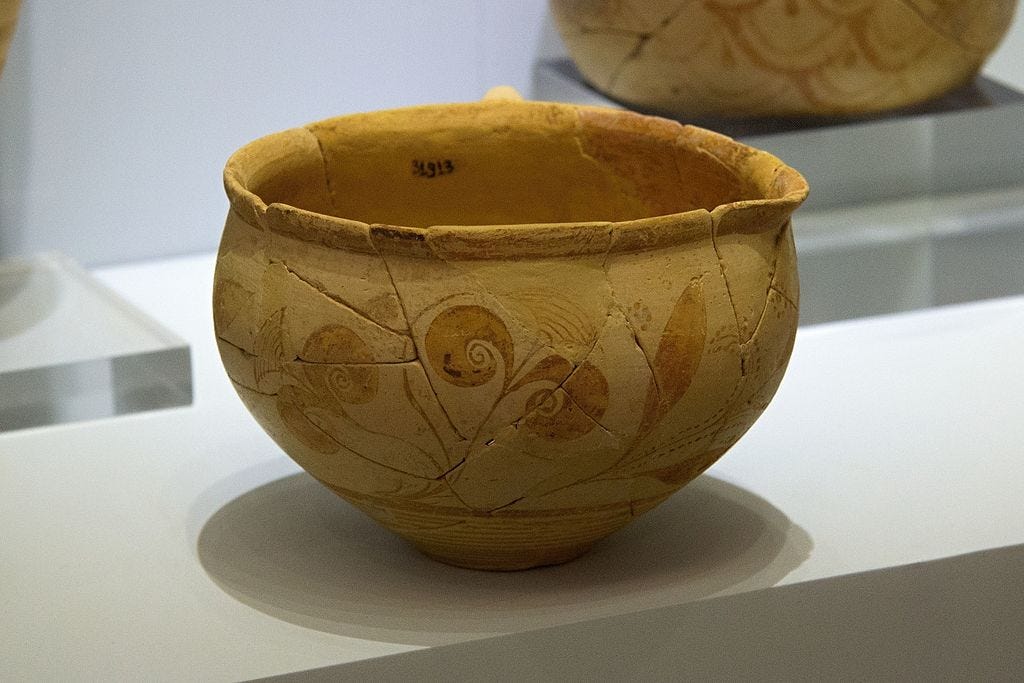
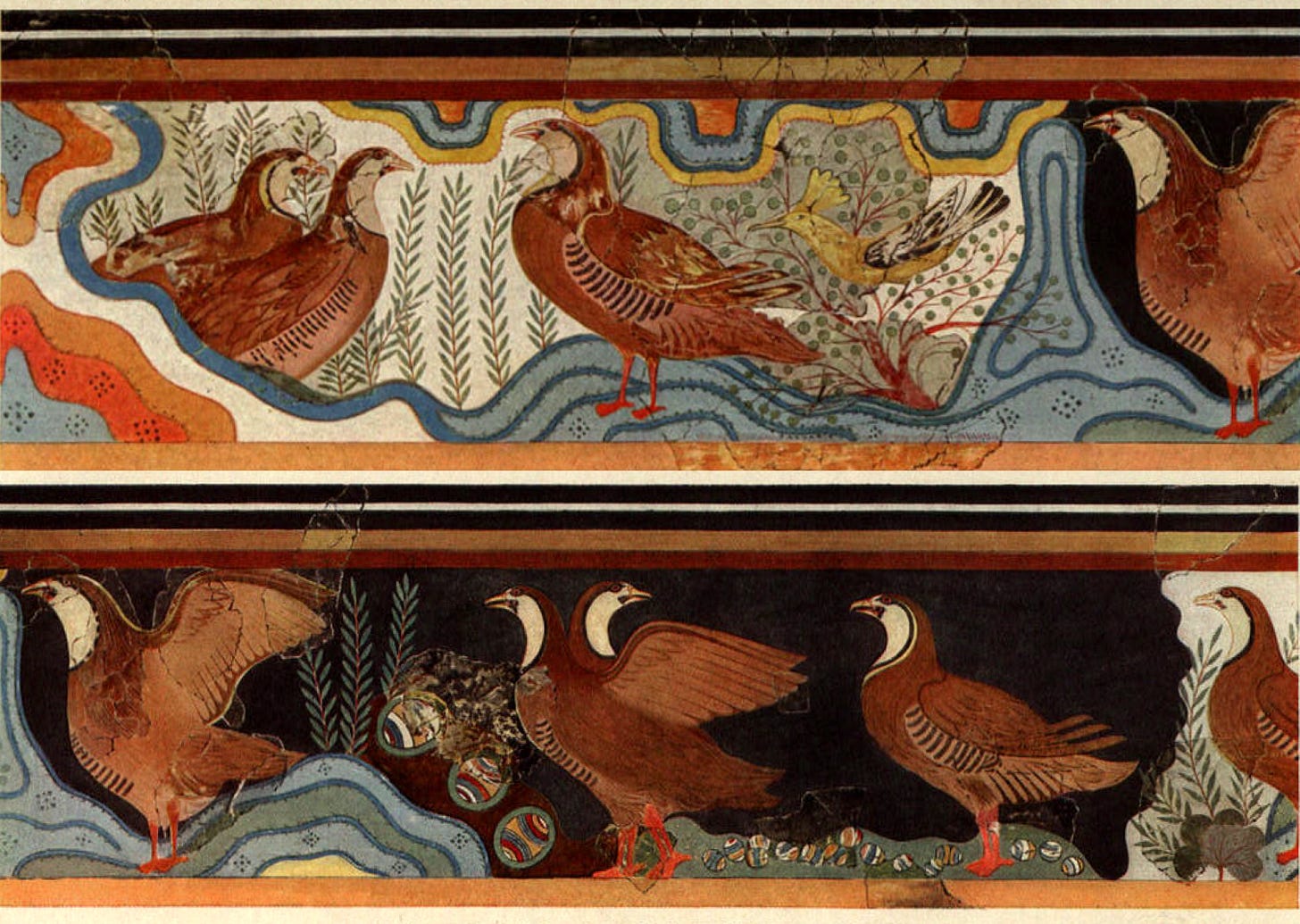

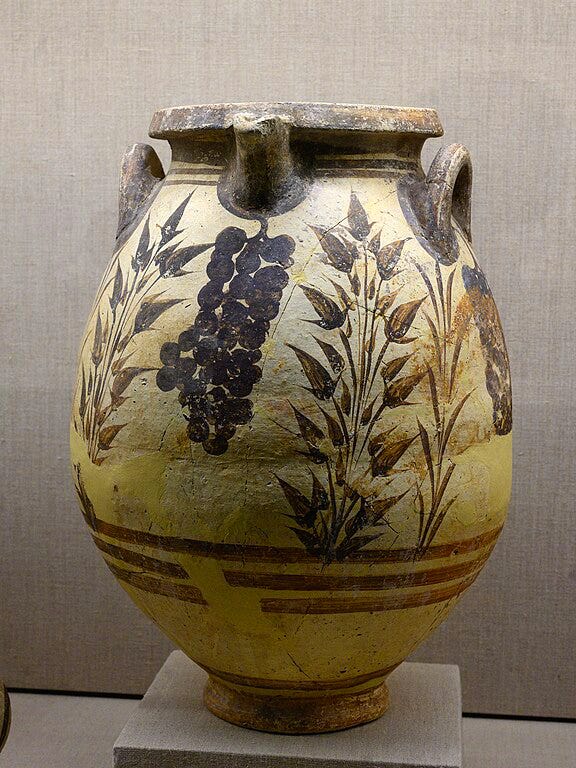
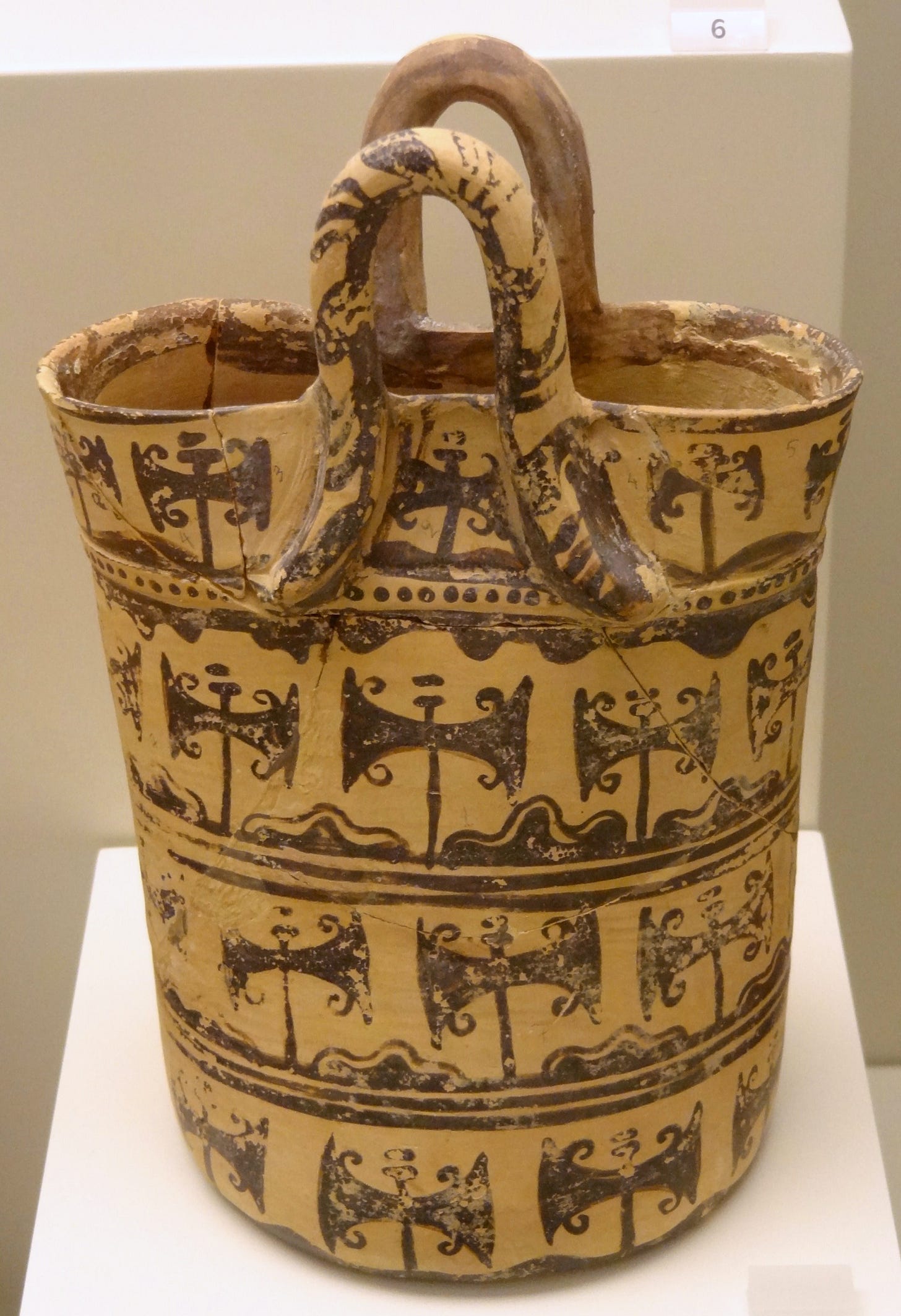
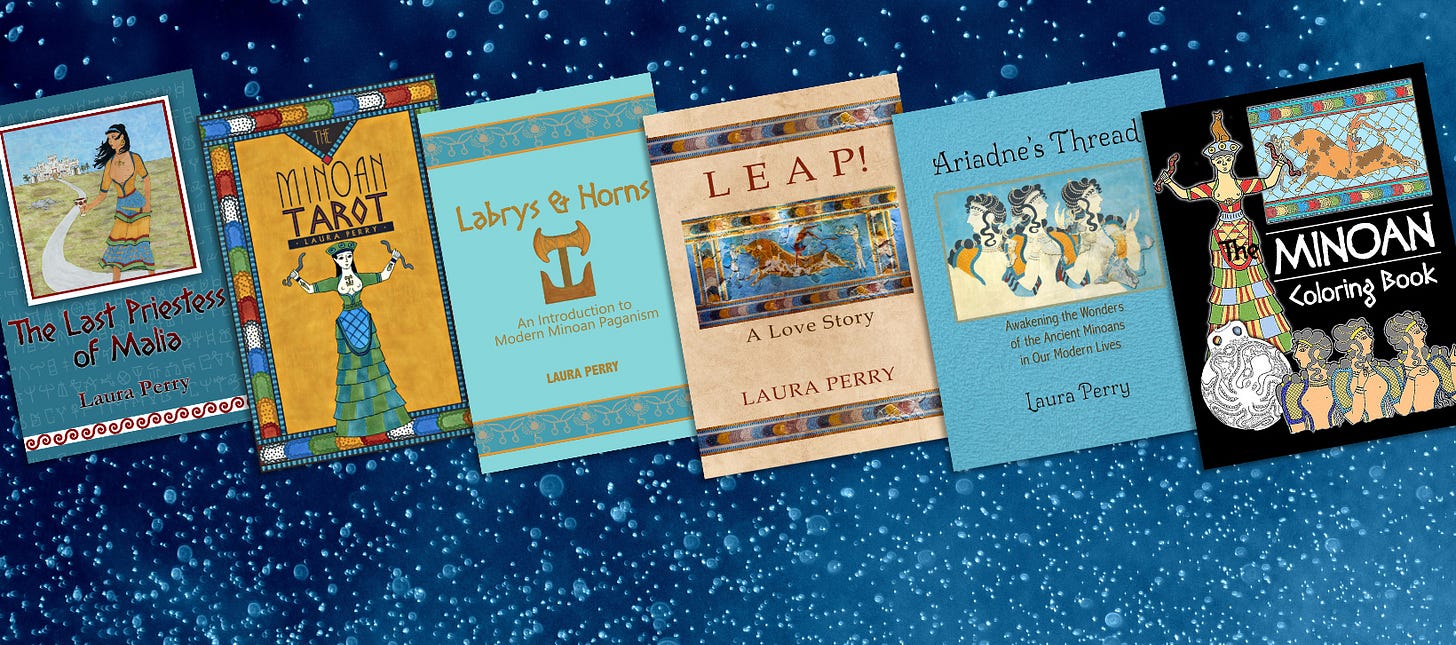
Thank you forthe very interesting post and the interviews. The amount of effort you have put into the research is amazing! Well done 👏! As for the mysterious plant next to the grapes, I can only guess it's a type of grass/cereal that was also harvested. Perhaps this plant is extinct? By the way, do have any more thoughts on the dots shown in your previous post? They might relate to someone seen during shamanic journeys in all cultures. This has been used to support the argument that reality is seen during journeys, while what we see as our day to day reality is an illusion.
Fascinating that animals were realistic, while plants were stylistic. Something to wonder about…